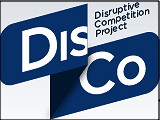When is a prediction not worth relying upon? For purposes of analyzing mergers under the Clayton Antitrust Act, a recent decision in favor of the Justice Department indicates that predictions are worth less — perhaps are even worthless — when they are contradicted by the actual facts of the marketplace. The government’s successful legal challenge a couple of weeks ago to the merger of two Internet start-ups ironically shows that the force of predictive judgments remains powerful, even when courts could employ reality as a basis for accurate comparison.
Some background. A 2013 DisCo post authored by the undersigned contrasted “future markets,” where the contours of products and entry do not yet exist and cannot reliably be predicted, with “nascent markets,” in which those features indeed exist but only in their infancy. My thesis was that antitrust enforcement in the latter is preferable because looking back at nascent markets once they have a chance to develop gives the government a more accurate basis on which to assess the actual impact of mergers and concentration than rank projections in which policymakers have no comparative expertise.
The case used to illustrate this theme was United States v. Bazaarvoice, Inc., in which the Justice Department sued to unwind a 2012 merger, already completed, between two firms in what it called the online ratings and reviews platform market. I concluded that
by challenging the merger post-consummation, DOJ has avoided basing its enforcement decisions on predictions of future markets and instead the case should rise or fall on the accuracy of its ex post analysis of actual competitive effects.
That’s not at all what happened, though.
Instead, Judge William Orrick of the U.S. District Court for the Northern District of California (San Francisco) followed traditional merger law that “to establish a violation of Section 7, the government need not prove that the merger has resulted in higher prices or had other anticompetitive effects. Rather, the government must show a ‘reasonable likelihood’ of anticompetitive effect in the relevant market.” Rejecting Bazaarvoice’s argument that prices have not in fact increased post-merger on the ground that the company may have moderated its conduct, thus possibly “manipulating” pricing data, while the case was pending, Judge Orrick concluded that “[e]conomic theory predicts that the merger will result in significant unilateral effects for customers that viewed Bazaarvoice and PowerReviews as the most attractive suppliers of R&R platforms and for whom the third-best supplier has a distinctly inferior product compared to the weaker of the two merged parties” (emphasis added).
This approach proves a few things. First, it is very hard for merging parties to defend their transaction when pre-merger internal documents, like Bazaarvoice’s, talk openly and proudly of obtaining a monopoly by eliminating “the only credible player in the space.” Those opinions are not facts, but the fact that they are voiced gives courts pause based on anticompetitive intent, which otherwise is and should be largely irrelevant to merger analysis. Second, the favorable Section 7 jurisprudence arising in the traditional pre-consummation context, especially use of market concentration to indirectly establish a prima facie case of illegality, is extraordinarily attractive because it allows enforcers and courts to avoid the far harder evidentiary demonstration that theory matches observed reality.
Third, and most significantly, the law still does not know how to grapple with the accelerated time frames and expanded scope economies of the Internet. The district court ruled that Google, Amazon and several other huge Web actors faced “reputational” barriers to entry into online ratings services and would likely not enter the market if Bazaarvoice raised price. That’s counter-intuitive to students of modern digital innovation and grossly understates the current deterrent effect of the mere possibility that a start-up’s market may be open to challenge from one or more far larger enterprises. (Just ask the VCs on Sand Hill Road if they would invest in a Series A round under those circumstances!)
Rejecting the relevance and weight of post-closing price changes as “ambiguous” masks the quite different fact that the trial evidence of 15 months’ ex post competition showed no discernible increase in prices. While Judge Orrick did not purport to create a general rule that post-closing prices have no bearing on Section 7 merger liability, his approach in effect yields just that result. Real-world facts do not matter if theory ex ante predicts a bad future result. That is true even though the court also correctly recognized that because social commerce tools like ratings are “at an early stage of development, rapidly evolving, fragmented and subject to potential disruptions by technological innovations, the future composition of the industry is unpredictable.”
The title of this post means no disrespect to Judge Orrick, who thoroughly reviewed all of the evidence from both sides, but his Bazaarvoice decision seems quite bizarre. When post-merger price effects are ambiguous, then shouldn’t merger law be that the deal under scrutiny is not more likely than not anticompetitive? Likewise, where real marketplace facts are inconsistent with predictions based on economic theory, shouldn’t the theory give way? And isn’t that especially important where the market in question is nascent, embryonic and “subject to potential disruptions”?
My answer to all those questions is unequivocally “Yes.” Now if only the law and those in government enforcing it would concur. By winning the US v. Bazaarvoice trial without showing that post-closing competitive effects in the nascent market it chose to attack had not, in fact, been harmful to consumers, the Justice Department’s success may have done more damage to antitrust law — and the appropriate role for government predictions of market development — than they ever intended.
Originally prepared for and reposted with permission of the Disruptive Competition Project.



Leave a Reply